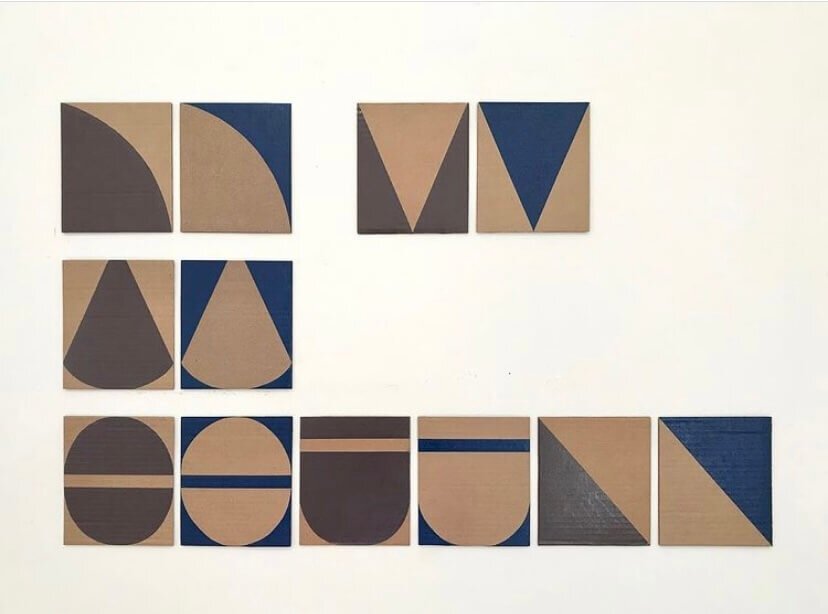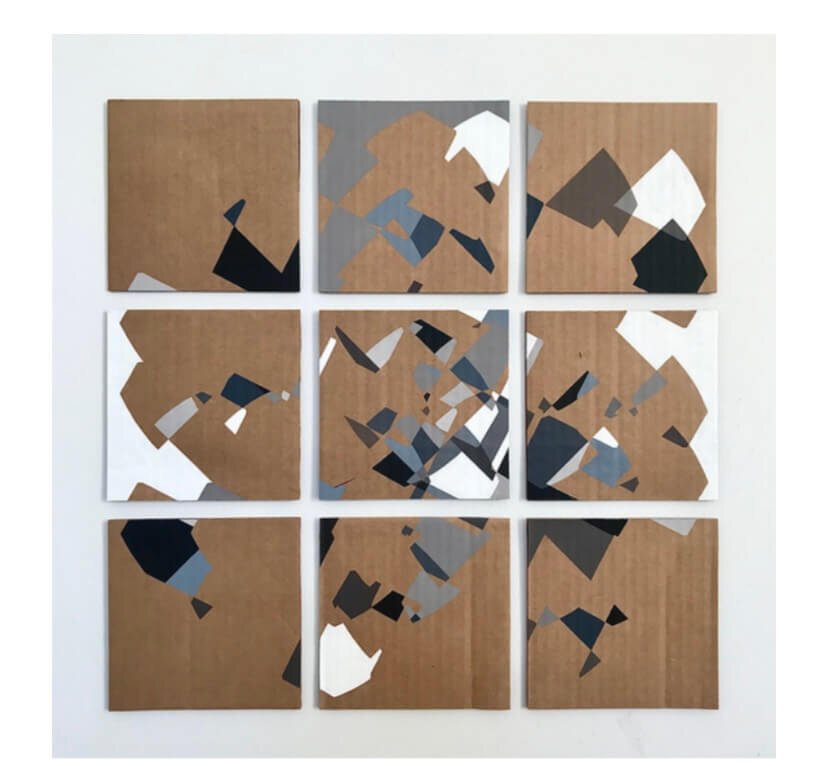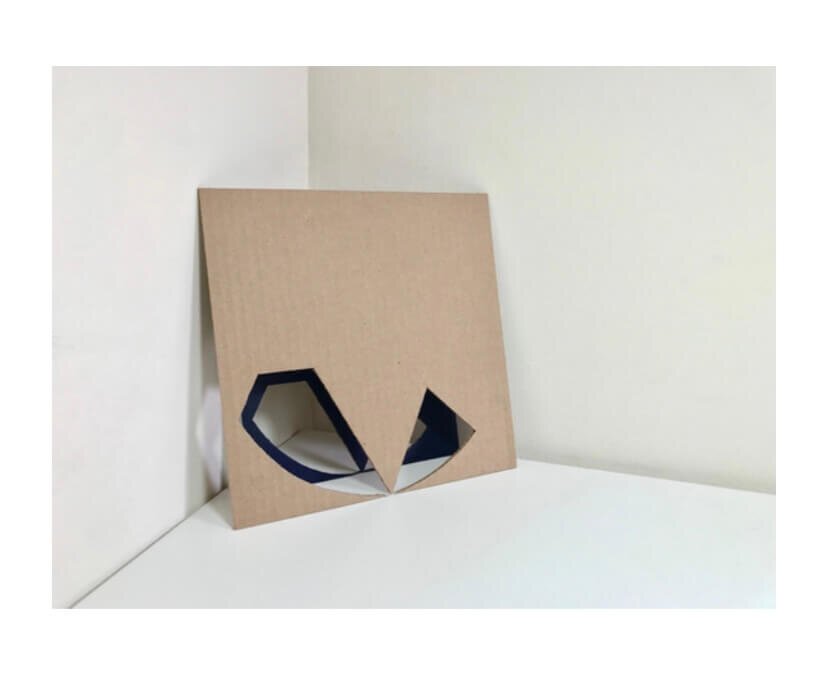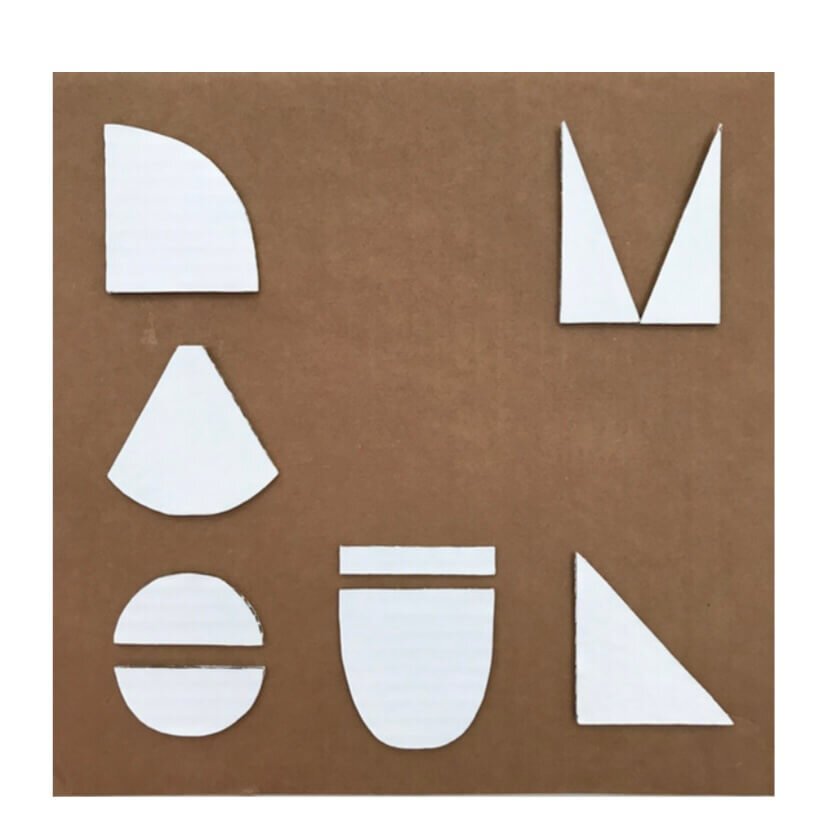Ji Eun Lim: Cardboard Creations
Ji Eun Lim is an artist and art educator based in New York from South Korea. As an artist, she became aware of the artistic potential of cardboard as a used material through her thesis research and teaching art. She recognized the infinity of using “used cardboard.” Cardboard was the material that stimulated her students to make their creation playfully. This motivated her to collect cardboard to create her visual narrative. During the progress of her work, she intensively contemplated herself as a human, artist, and art educator.
As an art educator, she pursues to motivate her students to explore their self-awareness through her teaching art. She graduated with: a Bachelor of Fine Art for Communication Design: Master Education for Fine Arts Education in Seoul, Korea. She taught visual arts and art history for five years in private art studios and several public schools in Seoul. Also, she graduated with a Master of Arts in Teaching (MAT) at School of Visual Arts (SVA) in New York City. Since 2018, she has been teaching diverse art lessons integrated with multi-disciplines such as science, history, social studies and other cultures in New York. She dedicates to share her own art, education, and multicultural experience of diversity with her students and colleagues.
Tell me about your background and where your creative journey began.
Being an artist was very natural as I loved art like drawing, painting, and making something from the time when I was a little kid. Art was just a big part of my entire life and my identity. I was going to be an artist or have any occupation relating to the arts when I was a high school student. Now, I am an artist-educator reflecting all of my diverse experience of art and culture.
What led you to explore cardboard as a medium for creating art, and how does this series differ from your other work?
Through my Thesis research––“How Art Teachers Work with Limited Budgets?”––in MAT at SVA, I have sincerely considered “used materials” for art education and my personal artworks. Also, working as a teaching artist in NYC stimulated me to develop my drawing and painting with discarded cardboard; cardboard creations, which my students made in the class, inspired me. In terms of the environment preferred and being against materialism, the ideas, “used materials'' and “reuse,” are the gears of my cardboard creation. I could easily collect a lot of cardboard because of my online shopping packages. And, I realized how my art philosophy contradicted itself by trying to use sustainable materials from what I had over consumed. “Reuse,” the perspective in my art, represents the ideas, considering the environment and life's simplicity. Ironically, my life philosophy is often tested by my old habits of excessively consuming resources that I hope I can one day overcome. In terms of monochrome colors of my cardboard works, Just like being black and white, I have a double-sideness to myself. I think all humans can relate to this concept of polarity in terms of saying one thing and doing another. One thing I’ve learned throughout my life is that there is nothing that I can be too sure about and judge too quickly. But, in contrast, I unconsciously do all the time. At some point, my flow of thought and artwork went through a concept of contradiction with my incompleteness.
Have you ever tried to simplify your life?
Simplicity is not as easy as we think since it comes from a complex process. I am still in the process of simplifying my work. As all of my work becomes simpler, I become more in tune with myself.
How has your work shifted and evolved over time?
I love to contemplate myself in silence. As a human, who will still be incomplete until dying, I need to reflect, consider, and be aware of myself to grow up. I have been strongly attempting to look at myself with an objective lens. All the process of my work stimulated me to contemplate my values which had dominated me and ones which were not. I might be overcoming, changing, adapting, or compromising myself towards what I hadn’t actually valued.
In terms of images of my work, which are abstract geometric shapes and monochrome colors, I’ve been simplifying and transforming shapes of my previous paintings and drawings. The shapes are originally transformed and visualized from letters of my name in both Korean language (Hangeul) and English alphabet. Through a long process, the abstract shapes were simplified. So, my artworks can be interpreted as my self-portrait and self-awareness because the origin of the images is my name. Furthermore, beyond this point,what I want to represent through my cardboard art is “contradiction,” which is an aspect of myself as a human and the visual narrative of my art. In my cardboard creation, I sincerely describe my contradictory aspect: using used cardboard, but over consuming: pursuing life simplicity with being minimal, but living in complexity with being maximal.
What does a typical day in the studio look like for you, and how has your art practice grown or changed?
Behind me, a lot of cardboard piles are always on my sofa, which has definitely lost its own role to keep my cardboard. My painting and expression can sometimes go through with the cardboard’s quality. Depending on how good the quality of cardboard I can collect, the painting sizes can be decided. In my current progress, I overlapped or splitted out an abstract image, which I’ve made as a template, with various ways to create new drawings and paintings. My emotion, thought, value, and reflection that I focus on at the moment can be reflected in my image with transforming it or color choices. Still, “contradiction” and “double-sidedness” are the core of my cardboard art so far.
Which experiences have impacted your work as an artist?
There are so many experiences that inspired me to create my art: my whole life itself: art making in my childhood: drawings and paintings of my teenager life: travels in diverse countries of Asia, Europe and America: teaching art and inspirations from my students: relationships with my friends, coworkers, and even lovers: staying alone in a foreign country: being an international student: language barriers and struggles: culture shocks and differences with understanding, respectation, and empathy.
Specifically, what impacted on my cardboard art is my valuable and diverse experiences in the U.S. I went abroad to Portland, OR to study English language in 2017 and met a lot of international friends and native portlanders. What I saw, heard, listened, ate, enjoyed, and felt in the city is subconsciously pervaded in my memories and mind. In Portland, I’ve already started considering “reuse” and “used materials” with my volunteering in the ReBuilding Center (RBC), a non-profit organization relating to the ideas, reuse and used resources. In RBC, I created “refind” stuff with salvage lumber and any types of used materials in the shop. I explored and experimented with the discarded materials to make unique furniture such as chairs, a bench, small shelves, and tables. In 2018 I moved to NYC to go to my graduate school, MAT at SVA. In the program, I studied art teaching in education with instructive classes and programs, for example: student-teaching in NYC public schools, elementary and middle/high schools: teaching and building art lessons for homeless people in a shelter through the graduate program: my Thesis project, “How Art Teachers Work with Limited Budgets?” As an international student from Korea, every single moment, which I experienced, motivated and inspired me to think about art and art education in more multi dimensional perspectives. Afterward I graduated, I started working in an art education organization as a teaching artist. Through after school programs and art camps that I taught and assisted, I could learn and consider more practical and economic ways to use art materials. The children, who were so excited to make their own creation with used cardboard, strikingly impressed me. Just the visible effect of cardboard itself, colors and its texture, also fascinated me to take it as a main material in my artistic expression. Otherwise, at some point, I asked myself questions: Do you need high quality art materials?: Do you still need to paint on only canvas?: Why don’t you make an “expensive” artwork with materials as “cheap” as possible? These questions were the beginning of my cardboard art, and now, I’m still considering how to overcome and progress my work with used materials to express my philosophy and narrative more strongly.
How has Instagram impacted your art career?
Instagram is very convenient to access any information such as open calls, artists, artworks, art programs, organizations, etc. So, I can get new information that I need or I didn’t notice. For example, I could find out about Visionary Art Collective on Instagram by accident and applied for it. Especially in this pandemic situation, it is very useful. Actually, I was not really a SNS user until last year, but these days, I’m easily utilizing it to look for what I want to see and need. I’m still a beginner on Instagram though.
What are your future goals and aspirations?
I will be still creating my artworks as an artist. Now, I don’t know what type of medium, genre, theme, or style I would be handling to create my visual narrative in my future as my artwork process could vary anytime with my new experience. Currently, what I want to do in my near future is material experiments with discarded cardboard; I’m planning to sculpt with used cardboard, which may be transformed such as paper clay. I mean I would like to try to transform the attribute of cardboard pieces, which is thick, hard, or solid, into different ways to build a new creation. Also, I hope to overcome the most weakness of cardboard artworks, which is more vulnerable to being long-lasting than steel, ceramics, plastic, or a canvas . Through the material experiments, I will try to make a long-lasting and strong sculpture with discarded cardboard. As an art educator, I will be absolutely teaching students about visual arts focusing on interpretations of themselves, their societies, their culture, empathy and respectation.
Follow Ji Eun on Instagram: jieunjieunlim
Website: www.jieunlim.net











